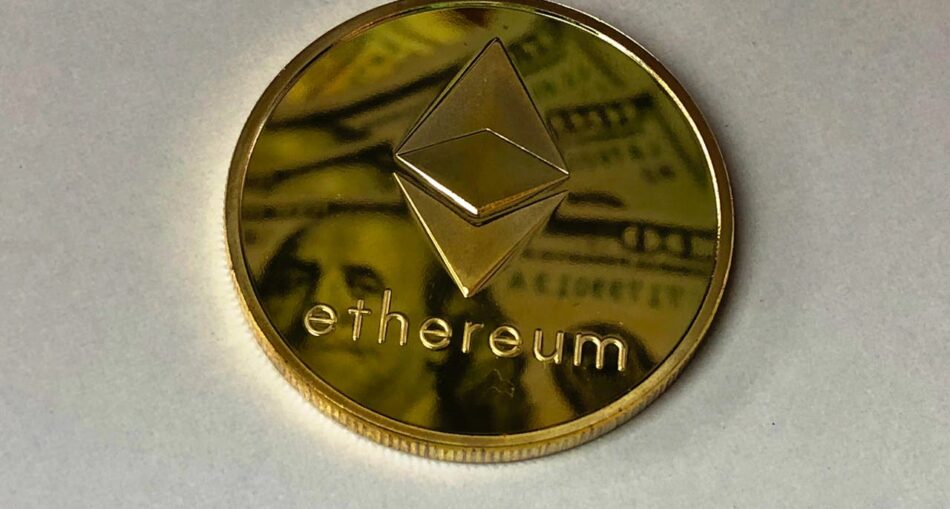Ethereum (ETH) has established itself as a cornerstone of the cryptocurrency ecosystem since its inception in 2015. As of late 2023, it remains the second-largest cryptocurrency by market capitalization, trailing only Bitcoin. The Ethereum network is renowned for its smart contract functionality, which allows developers to create decentralized applications (dApps) that operate on its blockchain.
This capability has led to a flourishing ecosystem of projects ranging from decentralized finance (DeFi) platforms to non-fungible tokens (NFTs), all of which leverage Ethereum’s robust infrastructure. The transition to Ethereum 2.0, which began with the launch of the Beacon Chain in December 2020, has been a significant milestone for the network. This upgrade aims to shift Ethereum from a proof-of-work (PoW) consensus mechanism to a proof-of-stake (PoS) model, enhancing scalability, security, and energy efficiency.
As of now, Ethereum has successfully completed the merge, which combined the original Ethereum mainnet with the Beacon Chain, marking a pivotal moment in its evolution. This transition is expected to reduce energy consumption by approximately 99.95%, addressing one of the major criticisms of blockchain technology regarding its environmental impact.
Factors Affecting the Future of ETH
Several factors will play a crucial role in shaping the future trajectory of Ethereum. One of the most significant is the ongoing development and adoption of decentralized finance (DeFi). DeFi platforms have exploded in popularity, allowing users to lend, borrow, and trade assets without intermediaries.
Want to amplify your trading strategy? Explore the ETH future contracts available on MEXC. Futures trading allows you to open leveraged positions on Ethereum, potentially increasing gains—or losses—depending on market direction. It’s ideal for experienced traders looking for short-term opportunities. MEXC makes it easy to get started with intuitive tools and a responsive trading interface.
The success of these platforms is closely tied to Ethereum’s capabilities, as most DeFi projects are built on its blockchain. As more users engage with DeFi applications, the demand for ETH is likely to increase, potentially driving up its value. Another critical factor is the competition from other blockchain platforms.
While Ethereum has maintained a dominant position, several alternative blockchains, such as Binance Smart Chain, Solana, and Cardano, have emerged, offering similar functionalities with varying degrees of scalability and transaction costs. These competitors pose a threat to Ethereum’s market share, particularly if they can attract developers and users away from the Ethereum ecosystem. The ability of Ethereum to innovate and improve its network will be essential in maintaining its leadership position in the rapidly evolving blockchain landscape.
Potential Price Trends for ETH
The price trajectory of ETH is influenced by a myriad of factors, including market sentiment, technological advancements, and macroeconomic conditions. Historically, Ethereum has experienced significant price volatility, often mirroring trends seen in Bitcoin but also exhibiting unique patterns driven by its specific use cases and developments within its ecosystem. Analysts have noted that during periods of heightened interest in DeFi and NFTs, ETH prices tend to surge as demand for transactions on the network increases.
Looking ahead, many analysts are optimistic about ETH’s price potential. Some forecasts suggest that as Ethereum continues to scale and improve its transaction throughput through Layer 2 solutions like Optimistic Rollups and zk-Rollups, it could see substantial price appreciation. Additionally, the deflationary nature introduced by EIP-1559—where a portion of transaction fees is burned—could further support price increases by reducing the overall supply of ETH over time.
However, potential market corrections and external economic factors could also lead to short-term price fluctuations that investors must navigate.
Technological Developments Impacting ETH
Technological advancements are at the heart of Ethereum’s evolution and will significantly impact its future viability and adoption. The introduction of Layer 2 scaling solutions is one such development that aims to alleviate congestion on the Ethereum mainnet while reducing transaction fees. Solutions like Arbitrum and Polygon have gained traction by enabling faster and cheaper transactions without compromising security.
These innovations not only enhance user experience but also encourage more developers to build on Ethereum, further expanding its ecosystem. Moreover, the integration of zero-knowledge proofs (ZK-rollups) represents another leap forward for Ethereum’s scalability. This technology allows for off-chain transactions to be bundled together and verified on-chain without revealing individual transaction details.
By significantly increasing transaction throughput while maintaining privacy and security, ZK-rollups could position Ethereum as a leading platform for both DeFi and enterprise applications. As these technologies mature and gain wider adoption, they will likely play a pivotal role in determining Ethereum’s competitive edge in the blockchain space.
Regulatory and Legal Considerations for ETH
As Ethereum continues to grow in prominence, regulatory scrutiny is becoming increasingly relevant. Governments around the world are grappling with how to classify cryptocurrencies and their underlying technologies. In particular, the classification of ETH as a security or commodity has significant implications for its regulation and use in various jurisdictions.
The U.S. Securities and Exchange Commission (SEC) has been particularly active in this space, leading to uncertainty among investors and developers alike. The evolving regulatory landscape could either bolster or hinder Ethereum’s growth trajectory.
On one hand, clear regulations could provide legitimacy to the cryptocurrency market, attracting institutional investors who have been hesitant due to regulatory uncertainties. On the other hand, overly stringent regulations could stifle innovation and limit the ability of developers to create new applications on the Ethereum network. As regulators continue to refine their approaches to cryptocurrencies, stakeholders within the Ethereum community must remain vigilant and adaptable to navigate these challenges effectively.
Expert Predictions for the Future of ETH
Expert opinions on the future of Ethereum vary widely, reflecting the complexity and dynamism of the cryptocurrency market. Some analysts predict that ETH could reach new all-time highs as institutional adoption increases and more users engage with DeFi and NFT platforms built on its blockchain. For instance, prominent figures in the crypto space have suggested that ETH could potentially reach prices exceeding $10,000 within the next few years if current trends continue.
Conversely, some experts caution that while Ethereum has strong fundamentals, it must address scalability issues and competition from other blockchains to maintain its market position. They emphasize that technological advancements alone may not be sufficient; Ethereum must also foster a robust developer community and user base to sustain long-term growth. As such, predictions about ETH’s future are often tempered with considerations of both opportunities and challenges that lie ahead.
In summary, while Ethereum stands at a pivotal juncture with promising prospects driven by technological advancements and growing adoption across various sectors, it must navigate regulatory hurdles and competitive pressures to realize its full potential in the ever-evolving landscape of blockchain technology.







